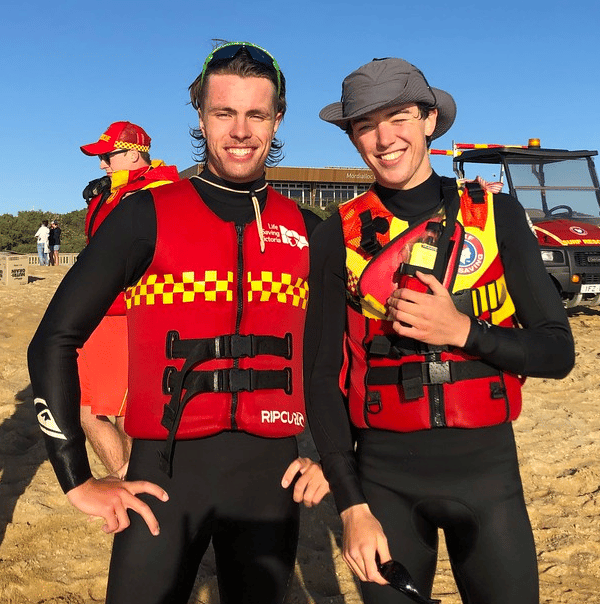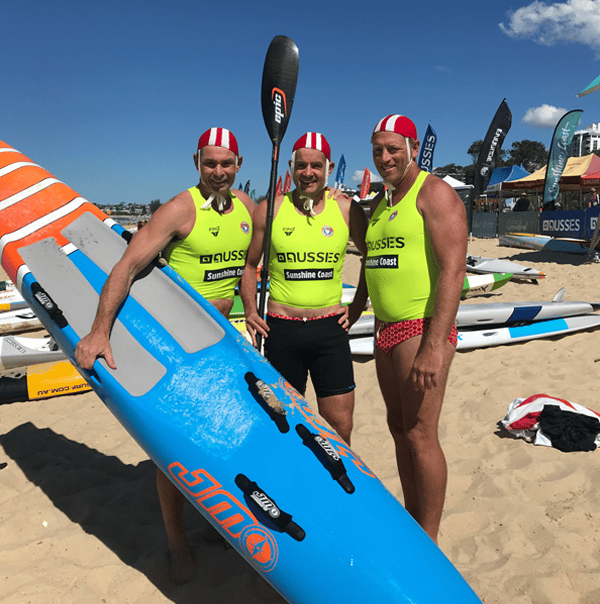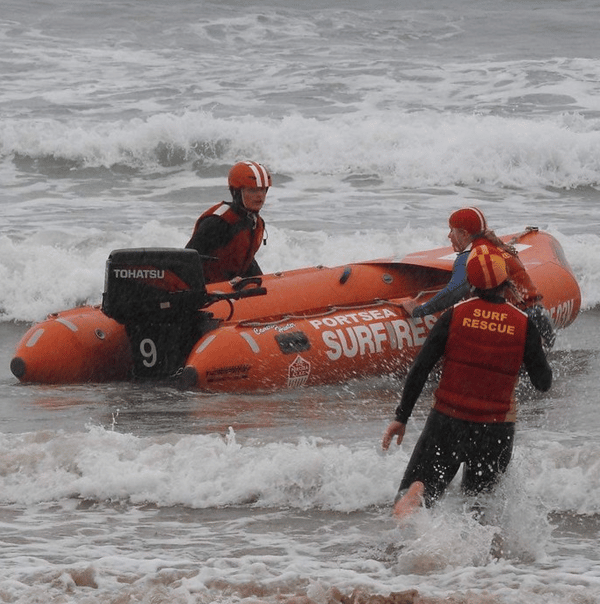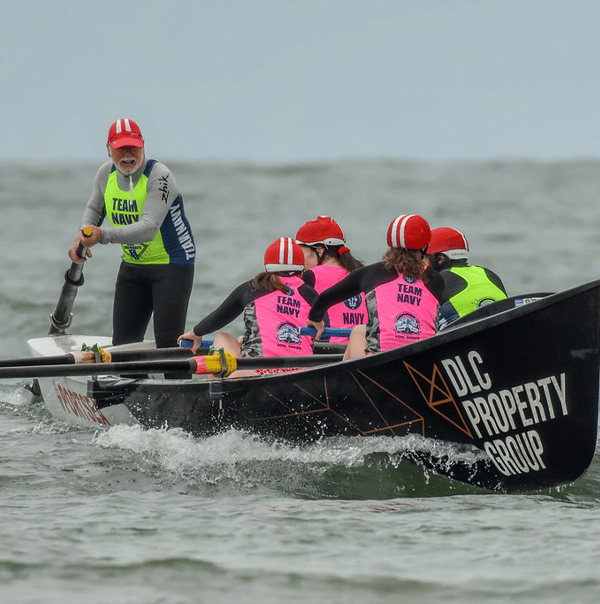COMPETITION TYPES
SUMMMER
Summer competition involves everything except IRB.
Beach flags is a traditional event that has existed since the very beginning of Lifesaving. It involves a group of lifesavers competing for flags(pieces of hosepipe). An athlete is ‘knocked-out’ each time and eventually there is a run off between two lifesavers. The one who wins the flag, wins the event.
Beach sprint is as it sounds. It involves a sprint over a distance of 75 – 100 metres. This distance depends on the amount of beach available at the time.
The beach Relay consists of a team of four competitors and a rubber piece of hose. Members 1 & 3 are stationed at one end of the lanes whilst members 2 & 4 are at the other. The object is to successfully complete the race without dropping the baton and exchanging within the set boundaries.
This event is the ultimate or main event in lifesaving. The Ironman/Ironwoman has its own series to support this claim. It involves four legs: swim, malibu, ski and run. It is an endurance event and is not for the faint-hearted.
This is a slightly easier version than the open or regular ironperson events. It only requires the competitors to complete the board and the swim sections and leaves out the ski leg.
Surf ski is an event that requires balance, coordination, power and endurance. It involves negotiating your way through the surf, around a set course and then returning to shore courtesy of the surf (if any). Mastering the surf ski can be a long and tedious activity. Double ski requires the same as single but you also need team work. Synchronisation is the key to a double ski race.
The board race is done by using a malibu board. It also involves negotiating the break and then following a set course of buoys. You then return to shore surfing the waves back to the beach. First over the line is the winner. The board race requires balance, strength and endurance.
A team consists of three competitors and just the one board. The first team member paddles out and goes around the buoy then heads back towards the shore and swaps with the second team member who does the same. The final team member has to complete the same course and then cross the finish line. The first team to successfully pass all the buoys and cross the finish line will be declared the winner.
The surf race involves swimming around a course of buoys placed out in the ocean. Getting through the shore break can be tough, but then to be a lifesaver you must be tough.
This event consists of a team of 6 competitors (2 swimmers, 2 board paddlers and 2 ski paddlers). At the start the 1st swimmer completes the swim then tags the 2nd swimmer who completes the course. The 2nd swimmer then tags the 1st board paddler and so on until the last ski paddler crosses the line. This event is time consuming but has a good team aspect about it.
There are five competitors to each boat, four of these are rowing and one is the sweep or the person that steers the boat. The aim is to row out and around their designated buoy and back into the shore and the winner is the first boat to cross the finish line or for the boat to run aground.
Traditional race using surf lifesaving reels that are no longer in use as a lifesaving method. Swimmers have to negotiate the break to get out to the designated buoys. It is a team effort with four linesmen and the swimmer ensuring the right amount of drag is achieved to make the swimmers job easier.
This event involves demonstrations in the traditional rescue and resuscitation procedures. The member of the team must swim out to the patient with the belt and line once the person reaches the patient they are hauled back to waist depth and begin resuscitation procedures. The team with the least mistakes and therefore the lowest score wins.
WINTER
Winter competition is only IRBs. There are Open Male & Open Female of each discipline.
Driver and crewperson approach a turning buoy, at which point the crewperson enters the water with a rescue tube attaches and swims towards the patient located at another buoy. After securing the patient with the tube, the crewperson tows the patient back to the IRB. Once the patient and crewperson are back in the IRB, the driver heads back to shore to finish.
This is the simplest discipline, with the driver and crew heading out to collect a single patient then returning to shore as quickly as possible.
Driver and crewperson approach two patients in the water, picking up one and returning to shore. The patient and driver exit the boat while the crewperson turns the IRB. A second crewperson makes their way to assist turning the IRB, while the first driver tags the second driver. The second crew makes their way out to rescue the second patient and return to shore to finish.
Driver and crewperson approach two patients in the water, picking up one and returning to shore. The patient exits the boat and the driver rounds a turning point on the beach while the crewperson turns the IRB. The driver restarts the IRB and again proceeds to collect the second patient. The IRB then returns to shore to finish.





